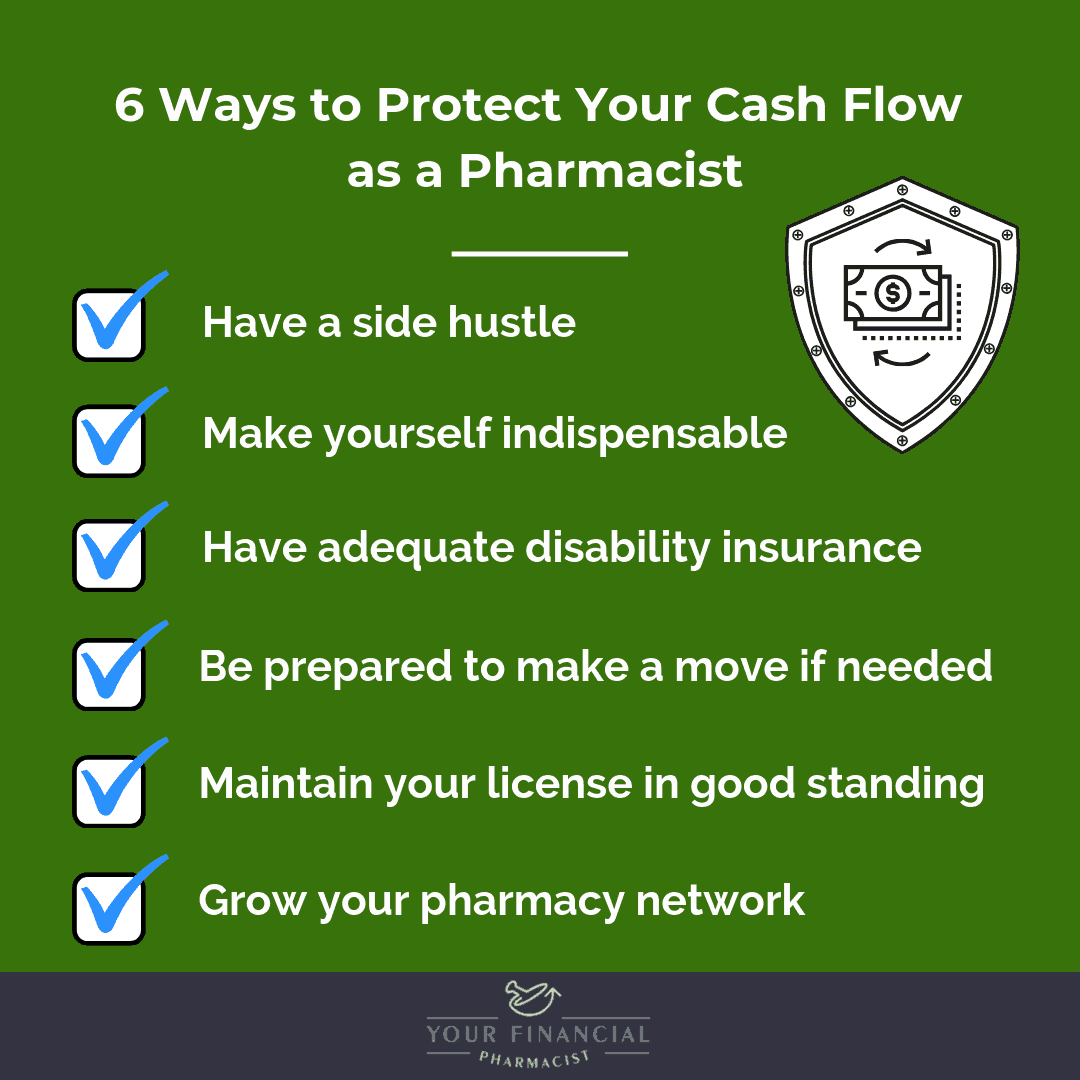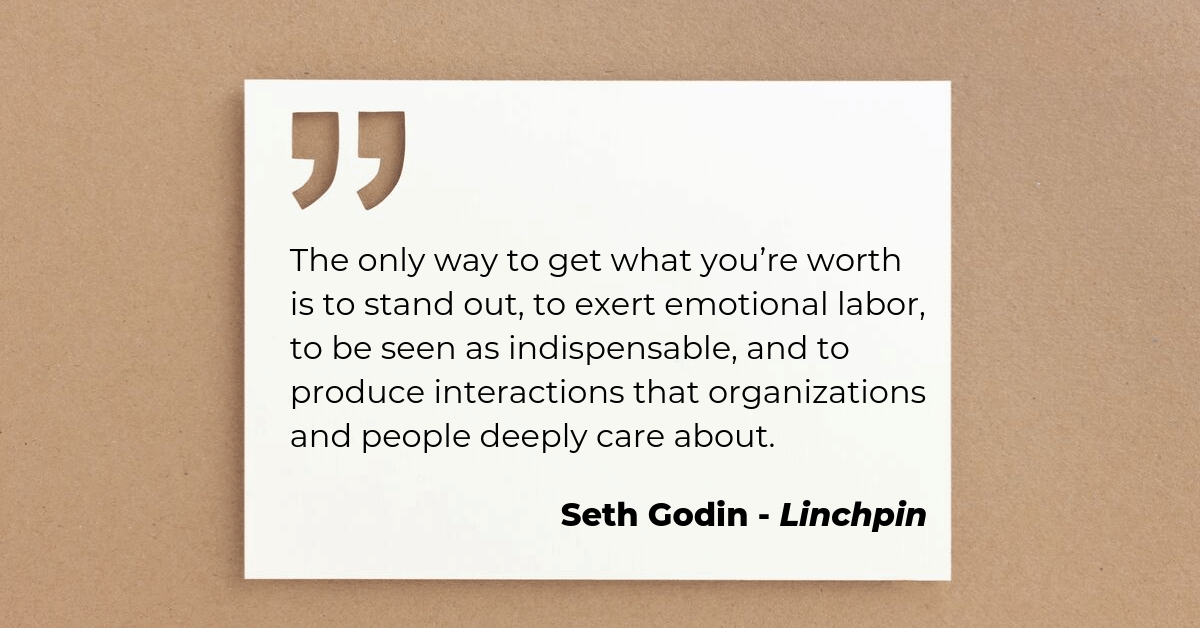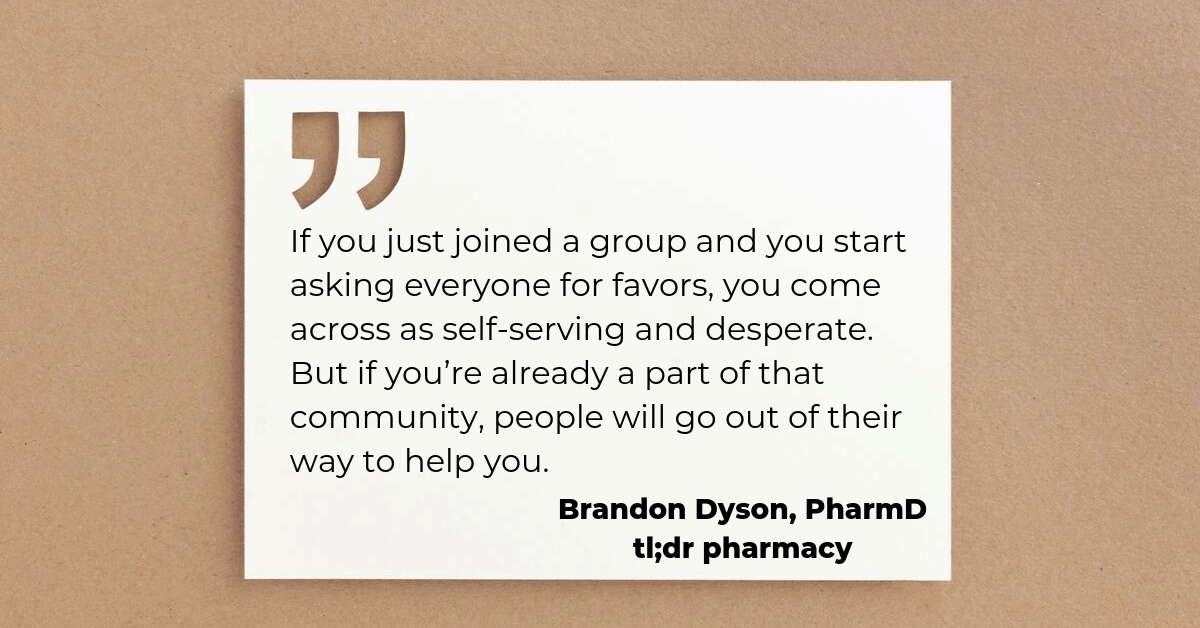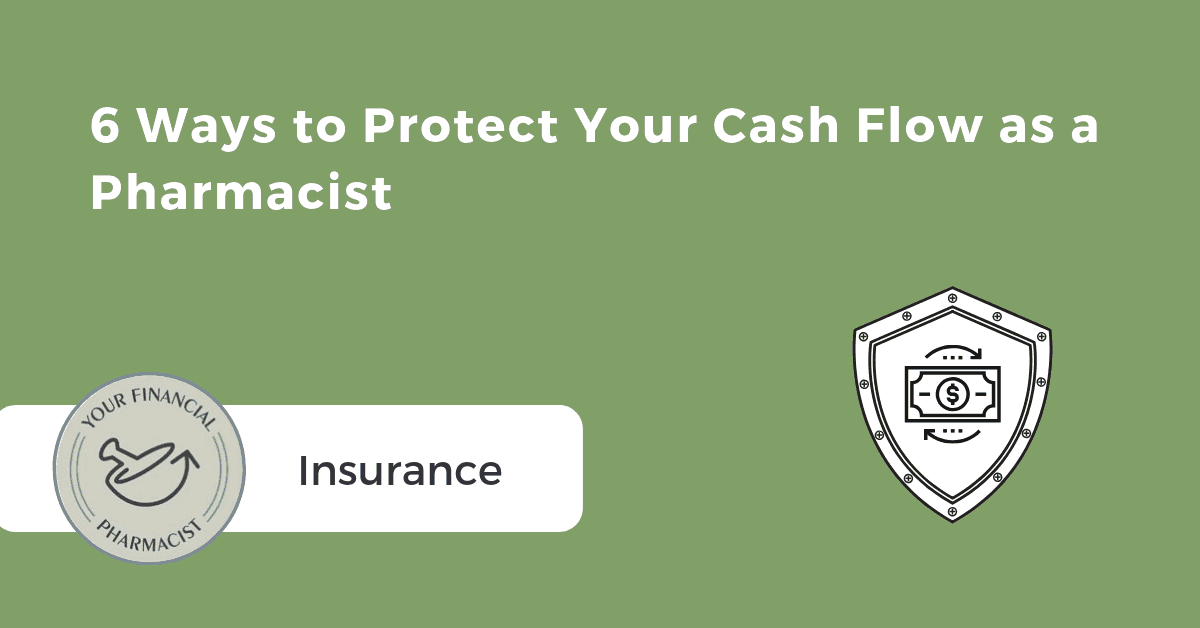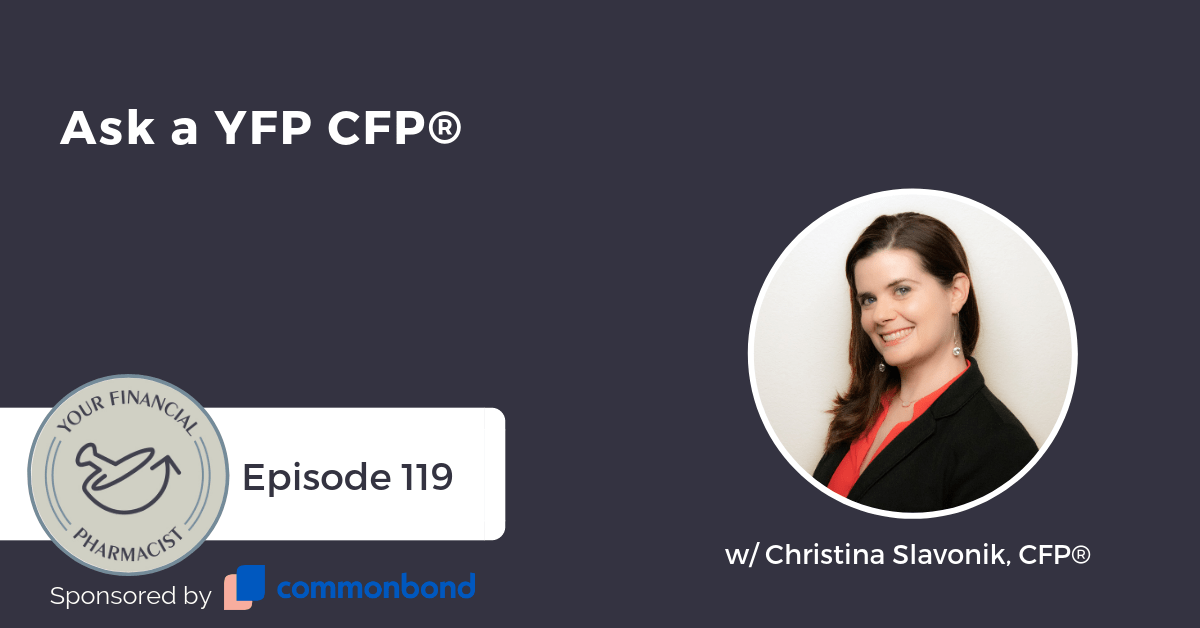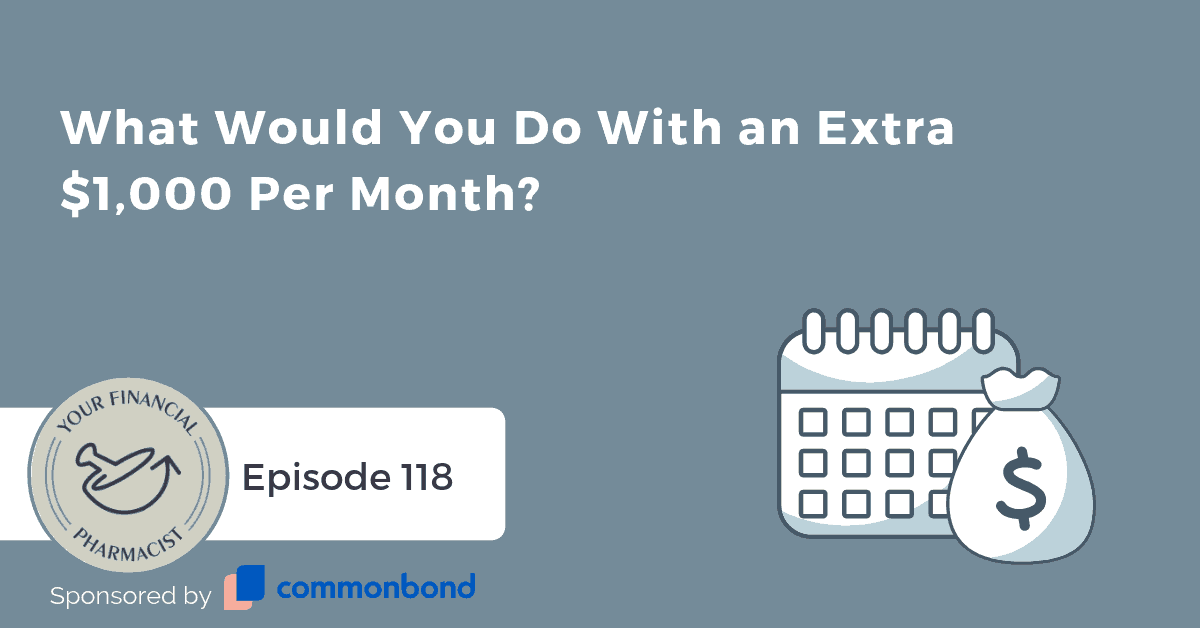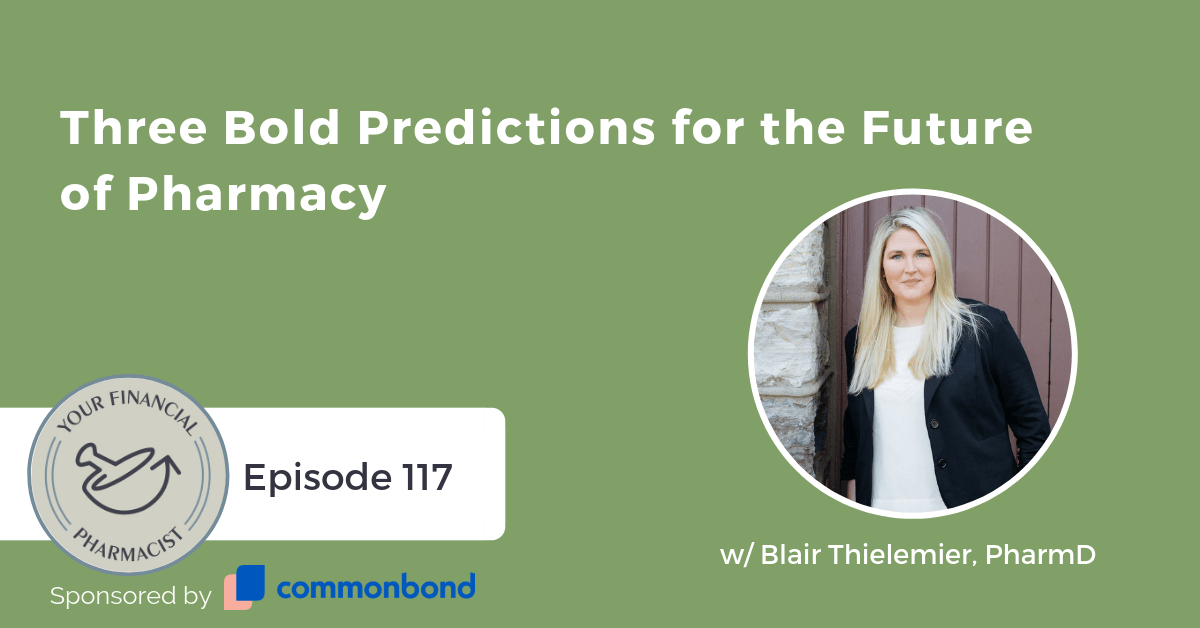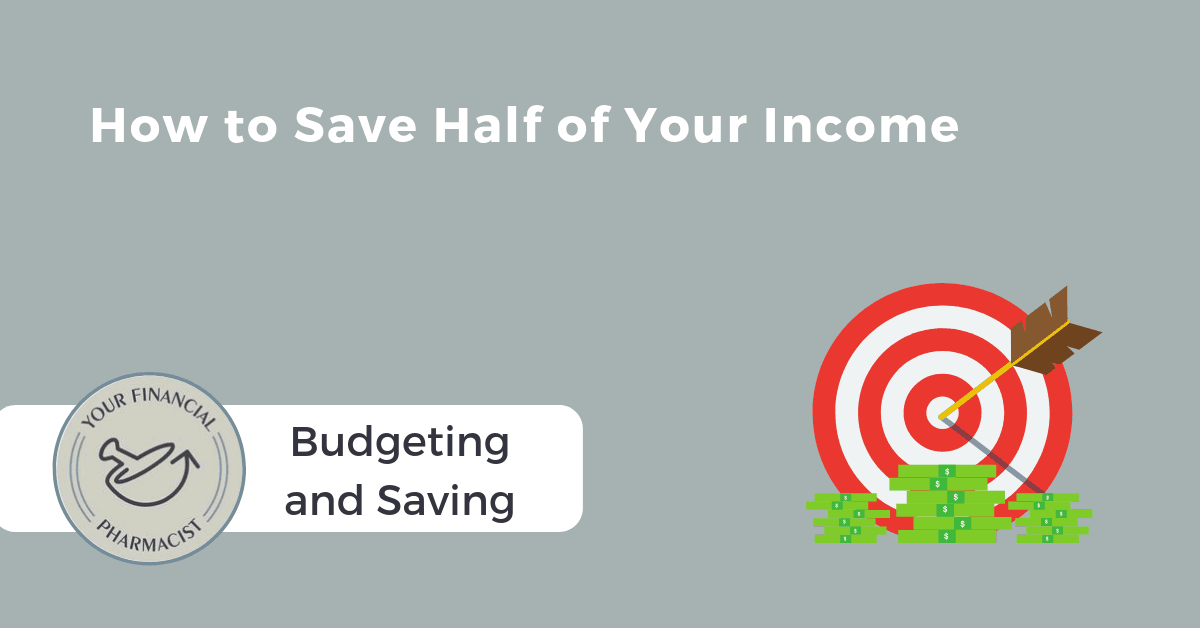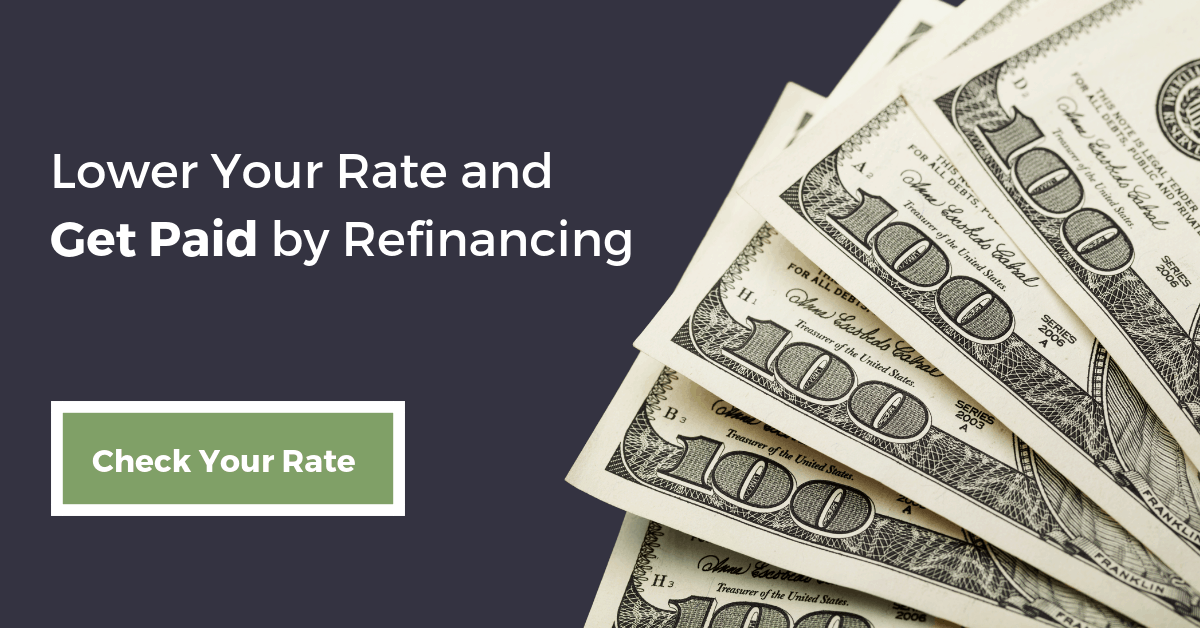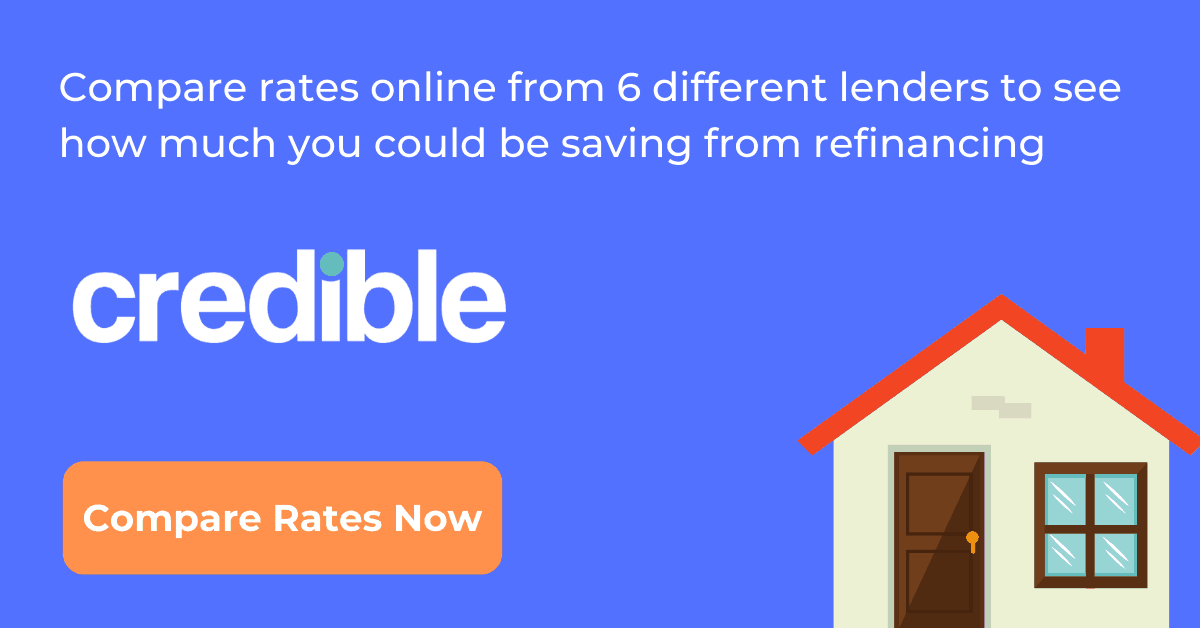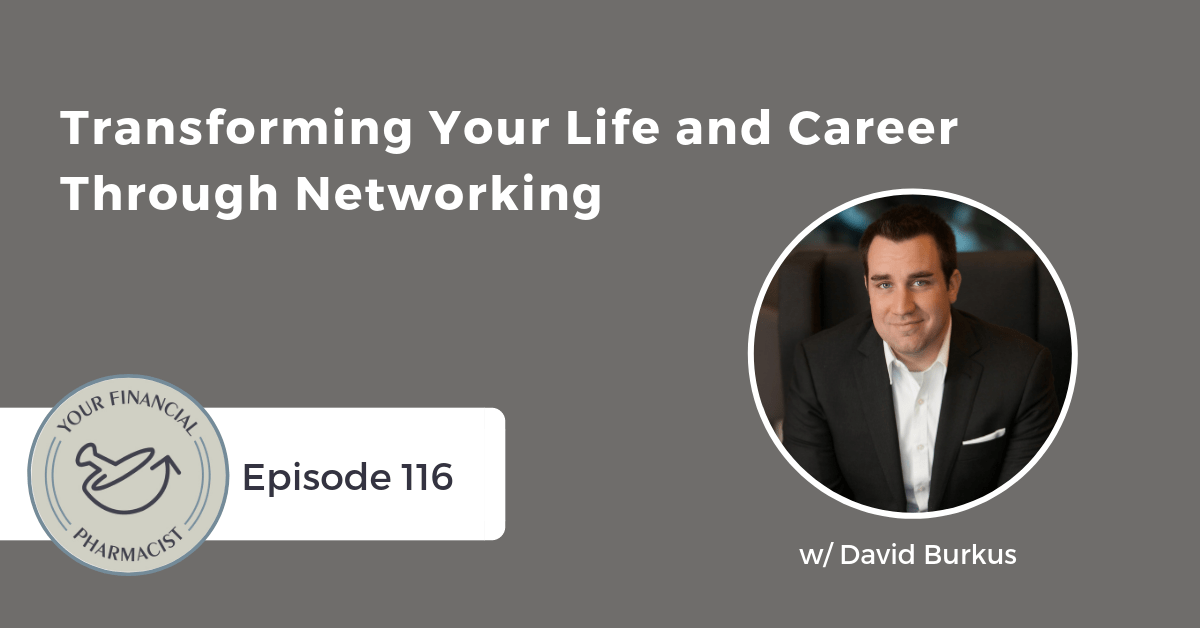Transforming Your Life and Career Through Networking
Best-selling author David Burkus joins Tim Ulbrich to talk about the science of networking and how the advice we have been given on how to effectively network needs to be seriously reconsidered and likely thrown out the window. David and Tim talk about his book Friend of a Friend and what the research has to say about a surprisingly simple approach to understanding your hidden networks are key to transforming your life and career.
About Today’s Guest
David Burkus is a best-selling author, a sought after keynote speaker, and Associate Professor of Leadership and Innovation. In 2017, he was named as one of the world’s top business thought leaders by Thinkers50.
His newest book, Friend of a Friend, offers readers a new perspective on how to grow their networks and build key connections—one based on the science of human behavior, not rote networking advice. He is also the author of Under New Management and The Myths of Creativity. David is a regular contributor to Harvard Business Review and his work has been featured in Fast Company, the Financial Times, Inc magazine, Bloomberg BusinessWeek, and CBS This Morning.
David’s innovative views on leadership have earned him invitations to speak to leaders from a variety of organizations. He’s delivered keynote speeches and workshops for Fortune 500 companies such as Microsoft, Google, and Stryker and governmental and military leaders at the U.S. Naval Academy and Naval Postgraduate School. His TED talk has been viewed over 2 million times.
Summary
David Burkus joins Tim Ulbrich on this week’s podcast to talk about his book Friend of a Friend, what the research has to say about a simple approach to understanding your hidden networks, and how the advice we have been given on how to effectively network needs to be seriously reconsidered.
David began studying organizations and learning about how to make working at them better. He learned that every organization is a network leading him to discover network science research. He dove into studying research articles written by physicists, mathematicians, psychologists, sociologists or whoever was studying networks. From there he came to understand that there were two types of work written about networking: advice books written from an autobiographical standpoint and fascination books written by researchers. David felt that there was an unoccupied space in the middle to teach people how networks work and avoids the advice trap.
David discusses that people often think strong ties or close relationships are the way to grow your network, but in reality weak ties are the most helpful. Strong ties are people that you interact with often, like close family, friends, neighbors or coworkers. Weak ties are people that you know but haven’t talked to in a long time. Perhaps they are people that come into the pharmacy once a month; you don’t know them well but you talk to them occasionally. If a situation arises where you are looking for job leads or have another type of emergency, you’ll connect with your strong ties but they don’t have as broad of a network as your weak ties do as they interact with more people you don’t know outside of your connection. Only reaching out to a weak tie in an emergency situation like this would make for awkward conversation. David suggests that you should be regularly checking in with weak ties so that when something comes up that you need help with, it becomes part of a normal conversation instead of a cold one. In short, he says to make weak ties like your old friends.
David delves deeper into weak or dormant ties and also discusses structural holes, super connectors, and meaningful and authentic engagement.
Mentioned on the Show
Episode Transcript
Tim Ulbrich: Hey, what’s up, everybody? Welcome to this week’s episode of the Your Financial Pharmacist podcast, where I have the honor of welcoming David Burkus onto the show. David is a bestselling author, a sought-after keynote speaker, and associate professor of leadership and innovation. And his newest book, “Friend of a Friend: Understanding the Hidden Networks that can Transform Your Life and Your Career” offers readers a new perspective on how to grow their networks and build key connections, one based on the science of human behavior, not broke networking advice. He’s delivered keynotes to leaders of Fortune 500 companies and the future leaders of the United States Naval Academy, and his TED Talk has been viewed over 2 million times. Also a regular contributor to Harvard Business Review, and his work has been featured in Fast Company, Financial Times, INC Magazine, Bloomberg Businessweek, and CBS This Morning. David, welcome to the show.
David Burkus: Thank you so much for having me.
Tim Ulbrich: So really excited about your work and your book “Friend of a Friend,” and before we talk about that book and the research and the impact that it has on us as a community of pharmacy professionals, the work that you’ve done on networking science, I’m curious and want our listeners to know a little bit more about your background. Why study this topic? Why make a career out of it? What intrigues you so much about networking?
David Burkus: Yeah. Well, the jury’s still out over whether or not I make a career out of it. I sort of have intellectual ADHD a lot of times and jump from different subjects. But ultimately, my background, I study organizations or I like to say I study how to make work not suck, right? And that’s in the realm of leadership and management but also creativity and innovation. And in each of those fields, I ran into some of the most powerful research on how organizations was network science research because every organization is a network. And in fact, most organizations you could describe as two different ones. You have the formal org chart network, right? And then you’ve got the informal who actually knows who, whatever. You don’t have to work in an organization to realize — like here at Ohio State, you don’t have to work in an academic institution too long when you realize that the department secretaries are more powerful than the actual chairs and deans, right? Because they know what’s really going on. And all of that is explained by networks. And so that got me in this path where I was just following the rabbit trail of studying all of these different research articles from the physicist, mathematicians, psychologists, sociologists, etc., who were studying networks. And I started to realize that there isn’t really a place for — there really isn’t a place being occupied for a work that would teach people in practitioner terms how to leverage this network science, right? Basically, when you say the word ‘networking,’ you had two categories of books available to you. The first were the sort of advice books. These are great. These are “How to Win Friends and Influence People,” and “Never Eat Alone,” and “How to Work a Room,” and they’re all great. But they’re all advice. And the shortcoming of advice is that it’s autobiographical. It represents the person, usually the man, sometimes the woman, what they did to grow their own personal network and then the promise that if you do this, it’ll work for you. And then that doesn’t address the sort of awkwardness of being someone else, right? You read that, you go to the networking event, you try and implement whatever it is, how to give an elevator pitch or how to say somebody’s name three times so you remember it — that’s never worked for me, by the way, the three times thing — and then you feel inauthentic first because you’re pretending to be somebody else because you read the advice book and you’re pretending to be him. But then sometimes it just doesn’t work because you’re not that person. So that was sort of the norm, most networking books. Then way over in almost published by the scholarly journals and things, you had what I call the sort of fascination books. These were books by the actual researchers, people like Nicholas Christakis and James Fowler, Duncan Watts, and what have you. And they’re fascinating, but they’re fascinating in that way that you watch a TED Talk and you go, wow, that’s fascinating. I have no idea what I’m going to do with my life.
Tim Ulbrich: What do I do with that? Yeah.
David Burkus: Right? But wow, that’s fascinating. So therein was the idea. Hey, there’s this unoccupied space in the middle that maybe if we create something that teaches people how networks work, which is what the fascination books do, describe the network that somebody is in and avoids the advice trap because it’s just saying, this is universally true of all networks, so I know it will be true of your network, but does it in that same practitioner language of one of those advice books. Maybe there’s an opportunity there. And so that was the big bet. About two years ago, we made that bet, started writing the book, put the book out there, and I wish I could tell you here that I’ve sold as many copies as “How to Win Friends and Influence People,” but I’m probably never going to hit that mark because that book is in the bazillions it’s sold. But the letters, the emails, the messages — ironically, mostly on LinkedIn — that I’m getting, the feedback that I’m getting, tells me that we really sort of hit that sweet spot, which is really kind of encouraging about a year after the book came out to hear people go, yeah, I never looked at my network that way or I never looked at the network that I’m a part of that way, thank you so much, that’s been awesome. So you know, we may not have as many people as Dale Carnegie on our side, but we’re teaching people every day how networks work and then how they can put them to work for them.
Tim Ulbrich: Yeah, and I’m really excited to get this out to the pharmacy community. I think we as a profession — I shared with you before we hit interview — we as a profession are really in a unique time where we have some significant pressures that we’re facing in terms of a shifting and evolution of our roles and people that are finding themselves in that job loss, and maybe they thought, forever I’m going to be in this secure position, or I have my hours cut, or I don’t like my job, whatever be the case, and this topic of networking and how to do it effectively and how to really shift your mindset around maybe the traditional advice you’ve always been given isn’t really the best advice, and maybe after all should be thrown out. And one of the things you mentioned that really hit me when I read the book is this concept that all advice is autobiographical. And I think that is so true, and it was really even humbling for me to think about as I’ve mentored other students, like I tend to tell them networking advice based off of what’s worked for me. Well, that may not be very effective for them, for obvious reasons. And so I think this concept of rethinking networking, especially for us in pharmacy where I would say is “traditional networking” is so prevalent, this idea that you’re at a national association meeting and you walk into a big room and you meet people cold and you hope that’s really going to advance your career and you’re going to have that two-way benefit I think is certainly a stretch. So let me start, David, in the beginning of the book, you talk about Adam Rifkin, who’s an entrepreneur that was named by Fortune Magazine in 2011 as the world’s best networker, which I really didn’t know was a thing, which is pretty awesome. So I mean, if somebody is called the world’s best networker, like who is this guy? And what was it about him that made him so successful when it comes to networking?
David Burkus: Yeah, well, so that’s the thing, right? Even if you hear the term, “world’s greatest networker,” you picture like the Dos Equis guy, right? Like this smooth-talking, tall, handsome, dark — I got those in the wrong order — wearing a three-piece suit, able to flip business cards out of the shirt sleeves at a moment’s notice, etc. You think about that person, and Adam Rifkin is not that person. If you ever met him, Adam Rifkin, I mean, he’s average height, he is definitely not average girth, he’s a little bit overweight, he likes to wear hoodies, most often a black hoodie with a white T-shirt underneath, which makes people think of him as a panda bear. And I say this because Adam has actually sort of adopted that term. Like he started a company called PandaWhale. Like he was the panda, his partner was the whale, right? Like he plays to this motif often, which is fine. He’s not that type of person that you would think would be the world’s greatest. He’s not charismatic, etc. What Adam is is Adam is someone who has a PhD in computer science and began to look at the way people interact the same way you linked up computers. And this is what’s amazing about networks is that some of the studies in “Friend of a Friend,” by the way, were not done with traditional human networks. They were done with networks of hyperlinks and computers and all of that sort of stuff. But what’s amazing is that there are certain principles that are universally true of all networks. And this is what Adam really focused in on. And particularly in Adam’s case, the thing he focused most in on is a term called resiliency in network science, that a network or a community is stronger the more links there are going between them. In other words, we think that it pays to be that sort of power broker person who only dishes out introductions seldomly and only makes connections when he or she can control what’s going on and get a piece of it, etc. And that model works a little bit, but it doesn’t work as well as focusing in on taking care of the whole community. So that’s what Adam started to do, started to connect people that he already knew. Eventually, it turned into actually these regular meetings. He was the first person in this Silicon Valley community to start regular meetings. Now, like I get invitations to meet up all the time. But this was 20 years ago when nobody was really worried about this. He started a community called 106 Miles, which is the term for the stretch of highway that is Silicon Valley, and started this community that now has thousands of different tech entrepreneurs and employees and venture capitalists, and all sorts of people coming together on a regular basis to meet each other. And that’s elevated Adam’s status not because he’s the one at the center of the network running the show but because he cared about the actual network, and then it just so happened that people became connected to Adam because they joined into this community that he built. And so fast foward to 2011, Fortune Magazine’s trying to say, well, outside of people who work on LinkedIn, etc., who is the most connected person on LinkedIn, and it was Adam Rifkin. What I think is funny is in truth to Adam Rifkin’s networked ability, the magazine did this experiment, the senior level editors who were at the magazine never really connecting — they’re editing, they’re not running beats, etc. — they were like, I’ve never heard of this person. So they hand it over to the writer who’s assigned to cover Silicon Valley, and they say, “Can you go look into this person, Adam Rifkin, he’s apparently connected to everybody.” And the journalist who covers Silicon Valley was like, “Oh yeah, I know Adam.” Right, because everybody does.
Tim Ulbrich: Right, right.
David Burkus: And I think the big lesson for a lot of us in Adam’s story is twofold. One, pay attention to the network that you’re around, but also take care of that network. Build what we call social capital in that network and trust that it will take care of you over time as well.
Tim Ulbrich: Yeah, and I love that in the book. I think for many pharmacists, this concept of networking is very overwhelming. They may be introverted by nature, and so when you talk about him himself saying, you know, I’m not an extrovert and it’s often not something that he’s thinking about intentionally interacting in those ways, maybe a little bit shy and awkward, but what he does have, to your point, is this understanding of how networks work and the effectiveness that they can serve. So one of the main takeaways I had, David, was this concept of strong ties versus weak ties. And you know, while it may seem counterintuitive, why weak ties tend to be more valuable. And this is something I think I forever will hold with me from this book. So can you define the two? What’s the difference between strong and weak ties? And why is it the case that weak ties may be more valuable?
David Burkus: Yeah, so if you think about your network — or actually, better stated, if you think about the network that you are a part of because it’s not yours, it belongs to the industry or the community, we’re all one big network of 7.4 billion people, right? But if you think about the network around you, you have various different types of relationships. Some are these what we call strong ties, they’re your close contacts, the people you see every day, the people you work directly with, they’re your friends, they’re your family, they’re the people you usually go to first when you have a question or problem or you need to learn more information about something. In a job, again, the people that you work with on a regular basis, maybe they’re assigned to your location, so they’re the people that are on your team, maybe you just see them on a regular basis because of what you do. And then there are the people that you don’t interact with that often — that either you don’t interact with that often or you do, but you don’t know them that well. Like I think about weak ties can be both people you know and used to know well that you haven’t talked to in a really long time — we actually use the term ‘dormant tie’ as a specific sort of subset of weak tie. But these are also the people that like you think about pharmacy, for example, these are the people that come in on a monthly basis and have for the last four or five years. You know them, you might even know their disease, but you don’t know them that well. You don’t even know what they do, what their occupation is, etc. Right? In a lot of organizations, I always make the joke that your weak ties are the people, in terms of an organization, they’re the people you know, but you only see them when there’s cake in the breakroom. Right?
Tim Ulbrich: Yeah.
David Burkus: And because of it, it turns out that when it comes to looking for new information, new ideas, new perspectives, etc., there’s a lot of redundancy among your close contacts. Right? You think about your team, the group of people on your team, well, your team’s already all connected to everybody. Right? And those people are highly likely to be the same people that they’re talking to all of the time. So you’re not going to get a lot of diversity of perspectives, you’re not going to get a lot of potential introductions or referrals through those people because the likelihood that you already know who they’re going to connect you to or what they’re going to recommend to you if you’re thinking about job leads, for example, they’re probably only going to know stuff you already would have known about anyway. So it’s actually your weak ties or your dormant ties who are in a close group of other people that are not you and are not your community that are more likely to be different from you, and hence, they’re more likely to have differing information, different opportunities, different potential introductions, sort of all of that. And the lesson of the strength of weak ties really isn’t this idea of like, OK, when you’re faced with an emergency, right, like oh, now I’m out of a job, go back and reach out to weak ties, which is how other people have talked about this concept of weak ties in the past. The problem with that is that it gets kind of awkward, right? You haven’t talked to someone in two years, and now you’re reaching back out to them because you just were invited to be successful at a different company by your organization or something like that. That can be an awkward conversation. So to me, the lesson of weak and dormant ties is to actually be regularly checking in with a lot of those people that you’ve identified as this is not someone I talk to often, but I could be important to them, they could be important to me, let me put in a system where I’m checking in with them on a regular basis, every three months, every six months, maybe it’s just once a year, whatever you’re doing to make it a little bit less awkward when they have an issue that they want to come to you to or when you have something you want to come to them with. It’s just another conversation in a series of conversations. The goal is to make weak ties like your old friends, those people who you could pick up the phone and call, and it just feels like no time has passed since the last time you’ve talked to them. The goal is to get to that level of rapport with a lot of different people so that when you’re faced with an issue, you have a lot of different people who have different information and different perspectives to go back and reach out to.
Tim Ulbrich: Yeah, and I’m so glad you brought that up of the importance of maintaining them all along and regularly engaging and being intentional and not just coming when there’s an emergency situation of a job. We can all relate to the situation of you get pinged on LinkedIn, and somebody’s classmate from 10 years ago, and they say, “Hey, you live in an area where there’s jobs available. Can you help me connect with somebody?” And it’s like, I haven’t heard from you in 10 years, right? So I think that regular engagement and maintenance is so important for our listeners to hear that even if you’re in a position where all things are going well and you’re not necessarily currently looking for a job, that you’re being intentional about regularly maintaining those. I want to spend a minute, David, on this concept of specifically the dormant ties as a subset of these weak ties because I found this really interesting, and I’ll share with you in a moment how I have practiced this over the last 3-6 months since learning about your research and work and how powerful it’s been, but in the book, you talk about that the research really shows the benefit of the dormant ties has more to do with the fact of their dormancy than with the perceived expertise of those individuals. So what is it about the dormancy that really brings the power in what those connections can bring?
David Burkus: Yeah, so I mean, ultimately, whether we’re thinking about job leads, we’re thinking about trying to think of a solution to a problem, whatever it is, ultimately what networks provide us is information. It’s why human networks and the network of the world wide web are so analogous to each other is that both are looking for information. You’re looking for new information, different perspectives, yeah, OK, potential referrals to new introductions, etc. And because those people are, you haven’t talked in awhile, it’s not like they don’t exist. To use like a gaming term, they’re not non-playable characters. They’re real people too. They don’t just sit around waiting for you to interact with them. And so because of that, they’re running off somewhere else in the network, interacting with a different group of people, and the likelihood that because of that dormancy, they’re interacting with people who are different than you, who don’t see the world the way you see it, who are aware of opportunities that you’re not aware of, etc., that likelihood increases the more dormant or the further away they are in the network from you. That’s where you end up with a lot more diversity, right? So the dormancy is what provides that. Even if you feel like oh, OK, there’s this other person, and he lives in my city, and yeah, he’s an expert in this exact area. I mean, the mere fact that he lives in your city means that you’re probably going to talk to that person more often and have already benefited from their knowledge. So just in the moment, you’ve already sort of gleaned a lot of it. But in terms of opportunities, perspectives, etc., it’s highly likely you’re going to have a lot more in common than the way, way out dormant person. So it’s a better idea to start with that person. And again, like you said, it’s not a good idea to just start with that person when you’re desperate. It’s a good idea to start with that person on a regular basis checking in with them, recognizing that it’s OK to not talk to everyone all of the time. Some people need to be dormant. That doesn’t mean you ignore them.
Tim Ulbrich: Yeah, and the visual that I have in mind is I’m envisioning these spiderwebs of networks that have the potential to be connected, but we tend to stay in our own lane, and we tend — I’m thinking my own situation of if an opportunity comes up or I’m looking at something in the future where I think about, OK, I need to lean into my network, we tend to go to those strong ties whereas the bridge really lies in the dormancy and the weak ties that’s going to open up other networks and opportunities. I think that concept is really cool. So now the question is, how do you engage with these folks in a genuine, authentic, meaningful way? I mean, is there an opportunity here through social media, through LinkedIn, through Facebook, that that to me would appear to be individuals that if they’re my strong ties, if they’re my closest network, I’m probably regularly interacting with them in a way that’s beyond LinkedIn and Facebook and other mechanisms of social media. But this may be an opportunity to really leverage social media to say, OK, these people are already in my network, and now I can open up that door and further the engagement.
David Burkus: Yeah. So the way that I like to say it is that social media is a supplement to, not a replacement for, your offline networking efforts. But you’re exactly right. When it comes to these dormant ties specifically, it’s a great way just to identify who they are. Right? If you think about Facebook, for example, if you pull up a list of your friends on Facebook, it’s already sorted by how frequently you interact with those people. And in of other places, you can ask for it to sort your existing connections that way. So scroll all the way down to the bottom, boom, we’ve already found some of your dormant ties. Right? Now, there are — the most common probably thing that people do on Facebook to reach back out to dormant ties is the birthday thing. On LinkedIn, it’s the work anniversary thing. Like if you’ve ever had one of these, you get inundated with messages that are actually usually just people clicking a button because Facebook asked them to click the button.
Tim Ulbrich: Canned message, yep.
David Burkus: We don’t necessarily want to do that. If you’re going to wish them a happy birthday — I’ve got a good friend, Derek Coborn, who also wrote a book on networking. And it’s also great, but it’s also advice. Derek Coborn does this thing where you see the birthday thing, and he records a 30-second video on his phone and then direct messages it to the person. Right? Because he’s at least rising above the noise. My favorite thing to do is just not worry about it at that time. People aren’t going to see that you clicked on something, or they’re not going to see that you put one thing in the comments where there’s 100 comments, right? Either take it offline or find a different time. What I like to do is put that person in my mind. I have identified my dormant tie, sometimes I used to go as far as putting their name on my calendar as an all-day event. You know how it sort of floats above the rest of your activities and you see it? And what’s amazing is if you put someone in your mind, you will find things throughout the day that remind you of that person. You’re reading an article, and you’re like, oh, you know, this reminds me of that time we were talking about x. Now you take the 15 seconds to send the article to them. Or you think of a conversation with them or an answer that you never gave or something like that. You end up thinking of this sort of organic reason to reach back out to them by a more personal means, direct message, email, text if you’ve got it, etc. What I tell people, so you get all the way to the end of the day, and you haven’t thought of something, you can send a three-sentence email that will — believe it or not — jumpstart a conversation. The three sentences are: I was thinking about you today. I hope you’re well. No reply needed.
Tim Ulbrich: Oh, that’s great.
David Burkus: The “No reply needed” one’s a little counterintuitive. When you say “No reply needed,” you’re basically saying, “I don’t have an agenda. I’m not looking for a job. I’m not trying to sell you into my new company and recruit you. I have no agenda. I just was thinking about you, and I hope you’re well.” And it sounds weird, but I’ve never been on the receiving end of someone telling me they wish me well and responded with spite.
Tim Ulbrich: Or nothing.
David Burkus: Or responded with awkwardness — or nothing, right? I’m going to reply with something. And more often than not, that turns into a conversation. Now a caveat here. Everything I just said in the last like two minutes, at least 90 seconds, is advice, right? So it may or may not work for you. But it’s a system that I put in place for myself after doing a lot of this research. It’s the way that I applied the research. And the big lesson is whatever is unique and authentic for you that is a system where you’re regularly checking back in with these dormant ties, that will work. You’ve got to be comfortable doing it. But once you do it, stay consistent with it so that over the period of a year, you’ve checked back in with all of those dormant ties. And the next time they need or you need them, it’s not an awkward ice-breaking conversation. It’s just another conversation.
Tim Ulbrich: So building on that example, couple examples you gave there of thinking about people and interacting with them, looking for opportunities, things they’re posting already, naturally, people are putting content out there, photos out there, they’re opening the door to have that conversation. You mentioned putting a holding place on an Outlook calendar. I want to talk for a moment more about this idea of operationalizing this research and making it practical and maybe even what you do in terms of a system because I think that the manual process of thinking of people, putting them on an Outlook calendar, could work for some time. But all of a sudden, you identify hundreds of these dormant ties and you want to engage them maybe on a quarterly basis, twice a year, even more. Are there systems, tools, things out there that can help people or maybe that you even use in this process of trying to both identify and engage with these individuals?
David Burkus: Yeah, so there are. There are a bunch of different digital tools. There’s two that come to mind immediately. There’s a tool called Levitate, which basically sits on top of your email and monitors who you’re talking to and how frequently you’re talking to them. And there’s a tool called Contactually, which does the same thing plus I believe Twitter, and they’re working on LinkedIn. So they’re trying to have it penetrate into social media too. And the idea is you then tell the system, you pull up your whole list of contacts, and you tell them, here’s how frequently I want to make sure I’m interacting with that person. And you’ll get an email — I mean, if you’re really off, you’ll get an email every single morning that says, “Here’s the new people that it’s been 90 days or six months or a year since you’ve spoken with.” And now you know who to put in the front of your mind for that day or those couple days. The interesting thing is I find that — so I’ve used a lot of those. I’m a big fan of Contactually, the founder is a friend of mine, etc., so that’s my full disclosure type of thing. And they work really, really well. What I’ve found is that if you use them for a year to two years, you start to not need them because you start doing that organic, you know, this person popped into my head and I took the 20 seconds to fire off an email or a text message to them. We’re not talking about a huge amount of time and a computer reaching back out to everybody all at once. We’re talking about a couple seconds every single day to check back in with people. And then yeah, making the time to have a conversation a couple days later, etc. And so what I’ve found, like on Contactually, for example, I still get an email every morning because I set it to do that. And every morning, I get an email that says, “You have zero tasks today.” I mean, every once in awhile, I’m like, ‘Oh, somebody fell through the cracks,’ and I actually get a reminder, which is great. But if you start to develop that habit, right, of slowing down when a name pops into your head and just taking the 20 seconds to reach back out to them, you end up not needing a lot of these tools. They’re a great place to start, they eventually teach you that habit, and then you’re good to go.
Tim Ulbrich: So as I mentioned to you earlier, before I had a chance to talk to you, I wanted to practice this after learning about your research. And so I was out there doing a little bit of a search, and I didn’t run across Levitate. I think I saw Contactually, and I also ran across a tool called UpHabit. And what was incredible is it identified people, you know, to this whole idea of dormancy and weak ties, it identified people that at one point in time, these were individuals that I maybe spent a year with on a longitudinal leadership program or I’d worked on research projects with or I’d worked with, had very strong relationships, had invested in making those relationships, and just out of the busyness of life, moving, and other things, haven’t kept in touch with them. And just the simple messages you alluded to reaching out to them sparked an entire conversation and even led to other things and collaborations. And so I would encourage our listeners, you know, whether you do this manually, whether you find a tool, give it a try for three months, six months, and see what happens. And I think really seeing your research come alive in practice has been a whole lot of fun for me personally and I think will be the case for others as well. So David, it just makes me think as we talk about tools and apps and systems to build connections, some people out there may be thinking, oh, this feels kind of impersonal, like I’m really trying to get people to be a part of my network and really see what value I can get out of it, which I don’t think is what you’re saying. What would you say to those that say setting up a system or trying to identify who you have to have contact with and scheduling them and those types of things just doesn’t feel very personal?
David Burkus: Yeah. Yeah, yeah, yeah. I get it. It’s one of my anticipated questions whenever I give a talk is the, ‘Well, this feels inauthentic.’ And I totally get that. But let me take you back from the dormant tie over to the close contacts. Right? I have reminder on my phone, I have my wife’s birthday on my phone, and then I have a reminder set seven days out of when her birthday is. Why? Well, I need to make a restaurant reservation, I might need to look for a gift, etc. Right? The fact that I set that reminder, does that make me inauthentic? No. I care enough to make sure that I don’t forget. And that’s I think the same thing that applies to those tools. We put systems in place to make sure that we seal out of our close contacts in our — for lack of a better term — real life or in our friend and family life — that’s why actually the book is called “Friend of a Friend” as opposed to any other sort of work term. The big lesson is that it’s about the whole network. There is no work and life bucket. It’s all just friends of yours, connections of yours, and we take the time to care enough about these other people, and sometimes it means putting a system in place. Why wouldn’t we do that with our professional contact as well? It’s not that we’re doing this so that we can be inauthentic. Now, you can use these tools to be inauthentic by just, again, doing the thing where you’re just saying happy birthday every year or clicking the little button that says, “Congrats on your work anniversary” on LinkedIn. You can do that. What we’re talking about is setting systems in place to remind you to then organically, authentically, and with intention, reach back out to people because you’ve declared that your relationship with them matters so much that you’re willing to put in the effort.
Tim Ulbrich: Yeah, I love that, the idea that creating a system and operationalizing the system really shows the value and the effort in the relationships and how much you care. One of the concepts in the book, David, you talk about is referred to as structural holes. And I find this very interesting and timely for our profession of pharmacy where I think it’s easy that we get caught up in connecting with like-minded pharmacy professionals when really, in fact, I believe we need to be branching out beyond the walls of pharmacy to other healthcare professionals, the business community, others beyond that, to really be able to effectively address the complex problems that we’re facing in healthcare. Talk to us more about this concept of structural holes.
David Burkus: Yeah. So networks are not egalitarian, right? You already figured it out because you have close contacts, and you have weak ties, that people cluster. We cluster by — I mean, the No. 1 way we cluster is literally proximity. So you work in a university system. Two fascinating studies of universities shows that professors, the people that are most likely to co-author a paper with, are the people they work in the same office with. And like literally if I move you to a different floor, the likelihood of collaboration drops. So proximity is one, right, but then even by function, it’s easier to have conversations with people who were trained in the same thing that we do, work in the same department with us, and so we end up spending a disproportionate amount of time. Over time in an organization, that creates the silos, the politics, the turf wars, all of that sort of stuff. In the bigger network that is our industry or our country or our world, people still tend to cluster around similar ideas, similar ideologies, similar training, similar backgrounds, etc. That creates what the sociologist Ronald Burt coined the term, structural hole, a gap in the network where there isn’t someone connecting one cluster to another cluster. And these are a huge problem for information flow because, I mean, ultimately, like I said, the idea about networks, networks exist to transfer information. That’s why you want to get involved in. You need information. But you also have information to share. And the other thing that happens, we know about — my first book was about creativity and innovation. We know that innovation is much more likely when you have a diversity of ideas and voices contributing to something. So structural holes become a huge problem. So if you take it upon yourself to close one of those structural holes, there’s a tremendous amount of value that gets unlocked for you. We would call you a broker in that situation, someone who’s decided to broker the connection between one cluster and another, to build a bridge. Usually, you start it through looking at those weak ties, those people you know who are in a different part of the healthcare industry, for example, or a different part of the organization, and being deliberate and intentional about reaching back out to them, that builds the relationship, and now suddenly, this cluster is better connected — both of the clusters are better connected to each other than they were before. That puts you in a broker relationship. Ronald Burt, actually — I love this quote — Ronald Burt wrote that the people who sit in the gap, the brokers that occupy the structural holes, are at the greatest risk of having great ideas. Right? So you think about the pharmacy industry, for example, it used to be that it never changed. It was a pretty consistent model. Right? It was the same thing as medicine. My wife works as an ER doctor, same deal. It used to be that nothing ever changed. And then suddenly, boom, everything is shifting around, the roles are shifting, it’s a much consultative role than it was before and we’re using AI and machines to outsource the stuff that doesn’t take a lot of highly critical thinking, etc. What will be the currency of navigating that change will be ideas. It will be information, and so the people who are at the greatest risk of staying employed are going to be those people who are occupying those structural holes.
Tim Ulbrich: That’s what I was just thinking about as you were talking about structural holes and those that broker it is that if somebody’s listening and they want to make sure they’re an invaluable asset to the community, to the organization they live in, or even if they decide to leave, you know, they’re going to be that much more valuable when they go to their future employer and they’re negotiating that opportunity is find a way to fill those structural holes. I think here at Ohio State, we have a university of 50,000+ students and just in the health professions, you’ve got medicine and pharmacy and optometry and vet med and dentistry, all relatively siloed. But there’s very few people, but they exist, who really can intentionally sit in those gaps. And it’s amazing what happens when you really start to open up those opportunities for collaboration through filling those holes. You also talk about — and this builds off of the example we mentioned at the beginning in terms of those that really have a disproportionate to connect with others. And you refer to them as ‘super-connectors.’ And I think this is interesting. When I first heard this concept, the first thing I thought of was the concept of compound interest, obviously relating to finance, and that really, over time kind of takes a life of its own because as you connect with more and more individuals, especially if you get to a certain level, of course, those networks are then going to be reaching out to you, and it just begins to take on a life of its own. So talk to us about this concept of super-connectors and who are those people and why they become that.
David Burkus: Yeah. So it’s actually sort of two concepts in one, right? So super-connectors, those are the people that are already well connected in an industry. These are the people you look at and you’re like, ugh, networking comes so easy to them. These are the people you silently hate, even when you cheer for them to succeed because it all just comes so easily to them. They’re the people who have a disproportionate amount of connections, the 80-20 Rule, the Power Lull, etc., exists when we graph the number of connections that individuals have. A small group of people are connected to lots of people, and the rest of us fit the down the long tail of that distribution. What’s interesting to me isn’t that super-connectors exist, what’s interesting to me is how they got there. And that’s where another phenomenon in network science called preferential attachment starts to develop. And it is literally compound interest, if you want to think about it that way. What happens is that as networks grow, evolve, as new people enter the network — just think about it in your own organization. As new people enter a company, who are they most likely to meet? Well yes, they’re going to meet the people they work directly with, but within the first week, they will probably meet the best connected person in that organization.
Tim Ulbrich: Absolutely.
David Burkus: Why? Because all of those other connections are going to introduce them to that person. So what we find is that super-connectors grow their network to a disproportionate level. It often happens organically because they have managed to hit this sort of critical mass where now everything compounds without them having to work. And if you talk to — like from the book, I profile a couple different friends of mine who are these sort of super-connector persons, and I specifically wanted to write about them because I wanted to address a thing they say that I always hated, which is they’ll say things like, “Oh, the key to a good network is subtraction, not addition.” Like well, yes. That’s easy to say when you have tens of thousands of people on your phone, right? For the rest of us, we’re like, I can’t even figure out how to get connected to someone at Walgreens. So super-connectors are the people who are leveraging preferential attachment. The good news, however, is that preferential attachment, it’s kind of like gravitational pull, it’s kind of like compound interest. It doesn’t matter where you start, it accumulates over time. So if you start to be consistent and deliberate about connecting with new people and also nurturing the relationships that you have, preferential attachment comes into play. So yes, there are definitely people who make it look easy. But they make it look easy because at a certain point in time, it wasn’t. And they put in the work to build to that critical mass to let it take over.
Tim Ulbrich: Yeah, and some of the people I think of as super-connectors in my own world — and you talk about this in the book and you give examples to your community as well — again, this concept of networking is a two-way street, right? It’s not about building your Rolodex, it’s about providing value back to the community and back to the network as well, and we talk about that with social capital. But these people, what I notice they do really well, is they also are constantly connecting people into others within their network or across networks to provide value and service or to help them solve a problem that they’re struggling with. So I think you talked through examples where if you’re in conversation with somebody or somebody else is in conversation with somebody else that they may not necessarily be the best one to be able to solve that problem, but they can help connect them with somebody else, which in turn, obviously expands their network further.
David Burkus: Yeah, that’s exactly right. So if you think about, again, the purpose of networks is information, and if you think about you’re standing in front of somebody, whether you’re talking to them for the first time or the 500th time, they’re facing a problem, they’re facing an issue, just the statistical likelihood that you are the person that has the information that they need is very, very small. You’re telling me about a problem you’re having with your electric work at your house, I’ve got nothing. I’ve got a phone number of a guy you should call. That’s all I got. Right?
Tim Ulbrich: Yeah.
David Burkus: But in reality, that’s all of us almost all of the time. The likelihood that our experiences are going to be what could help them is small compared to the likelihood that we know someone who actually has that expertise. And so the best way we can provide value to individuals is usually through the network, the group of connections that we’ve already built up, the people that we already know, and offer to make that introduction. Now, what’s amazing about that is that also helps the network when we make those connections. This goes back to Adam Rifkin and the idea that a network, the more resilient it gets, the more people interconnected inside of that community, the stronger it is. It also builds what we would call social capital, the value of all of the connections you have, and it builds your own reputation as sort of a generous person as well, which makes it more likely that new connections are coming your way. You don’t have to be that sort of — Adam Grant would use the term “Master” where you’re, ‘I introduce you to somebody, now you owe me.’ You just take care of the network, and over time, the network takes care of you.
Tim Ulbrich: Yes. Absolutely. One of the common sayings connecting this to personal finance is that someone’s network will ultimately be reflected in their net worth. And I was thinking about why that may be the case. I mean, there’s so many potential reasons from some of the things we’ve talked about where as you meet more people and you’re building that network and providing value and vice versa, that’s going to take on a life of its own, which of course is going to open up more doors, you’re building your personal brand, you’re probably increasing your confidence and that can translate to negotiation and all types of things. Do you think there’s a direct connection between somebody’s network and their financial position and where that may come from?
David Burkus: Yeah. I mean, I generally love to debunk trite phrases like that, but this is one where it does tend to work out that way. And the reason, again, is that information idea. It’s twofold, right? You’re looking for information to grow your own career, you’re looking for a new — I don’t know — investment opportunity, whatever it is, you end up having access to more information and hence, more options because of that. The other thing is that, quite frankly, people rub off on other people. We respond to the social norms of the people that are around us. There’s some research that actually suggests this is not just our close contacts, but it’s a ripple effect out three degrees of separation, so the people that they know and the people that they know. So the communities that we’re a part of have a big effect on this as well. The example, Tim, to use an adjacent field, to go into my wife and I in medicine, there’s a lot of people, especially in ER, who work a ton and have zero net worth. Right?
Tim Ulbrich: Yeah.
David Burkus: And the reason is that they bought the boat and the lake house and all that other stuff, and they figured out like, oh, I can just work extra shifts, I can do overtime, and I can pay for it all. And the irony is then they’re in the community of people that own the boat and do the lake house and do the whatever, right?
Tim Ulbrich: That’s right.
David Burkus: And it’s actually the people that are pulled out of that community that are in the well, what matters is paying off my house. What matters is getting rid of all of this student loan debt, all of the stuff that got us there, those sort of things matter. That community that you’re a part of shapes your decisions as well. So and that’s the short term. The short term is that it shapes your decisions. The long term is that when you’re looking for opportunities or opportunities just find you, they’re much more likely to find you when you’ve got a broad, diverse network — again, I should rephrase that — when you’re a part of a broad and diverse network of people.
Tim Ulbrich: So David, in addition to getting a copy of your book, “Friend of a Friend,” which is available on Amazon, Barnes & Noble, Indiebound, where can our listeners go to learn more about the work that you’re doing?
David Burkus: Yeah, so the single best place to go would be the Your Financial Pharmacist podcast show notes.
Tim Ulbrich: That’s right.
David Burkus: Because my website’s great, it’s DavidBurkus.com. But if you can’t remember that, Burkus on Google, I’m like the only one with a web presence, which has been amazing and probably won’t last. But there’s a bunch of different links that you can click, but they’re going to be in the show notes anyway. While you’re there, you might even click over and leave us a rating if you really liked this or click over and buy the book because if you liked this, you’ll love that too. If you hated it, you’ll hate that too. So I would actually say go there first. And then yeah, if you want to go to DavidBurkus.com too, that would be great.
Tim Ulbrich: Well, I really appreciate it. I thank you so much for your time. And again, genuinely, your work, your research, has had a positive impact on me. And I know that’s going to be the case as well for many of our listeners. So thank you so much.
David Burkus: Oh, it’s my pleasure. Thank you again so much for having me.
Recent Posts
[pt_view id=”f651872qnv”]
